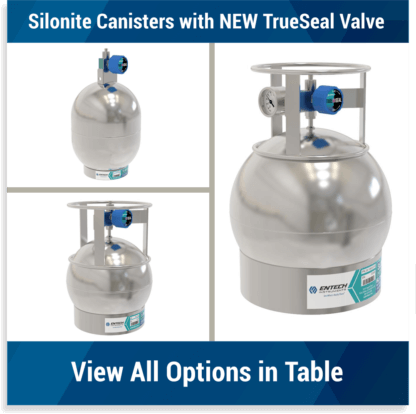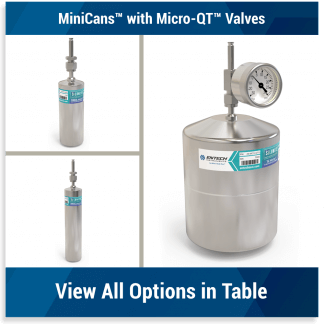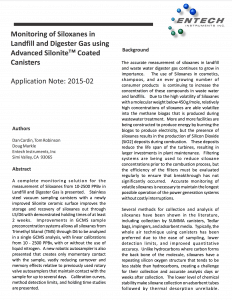Volatile siloxanes can cause considerable damage to power generation equipment through the build-up of silicon dioxide created from combustion at burners. Siloxanes coat turbine blades and heat exchangers degrading performance and eventually causing failure.
Why Monitor Siloxanes?
Overview
The accurate measurement of siloxanes in landfill and waste water digester gas continues to grow in importance. Siloxanes found in cosmetics, shampoos, and a host of consumer products has continued to increase the concentration of these compounds in waste water and landfills. Due to the volatility of these compounds, their concentration in the gas phase is sufficiently high to produce silicon dioxide residue in energy production systems designed to use the high methane levels in digester and landfill gas to produce power, while reducing the global warming effects of emitting methane into the atmosphere. These SiO2 deposits reduce the life span of the turbines, resulting in larger investments in plant maintenance. Filtering systems are being used to reduce siloxane concentrations prior to the combustion process, but the efficiency of the filters must be evaluated regularly to show that breakthrough has not significantly occurred. Accurate monitoring of the lightest to the heaviest siloxanes known to be present is necessary to maintain the longest possible uninterrupted operation of the power generation systems.
Collection & Analysis Methods
Several methods for collection and analysis of siloxanes have been shown in the literature, including collection by SUMMA canisters, Tedlar bags, impingers, and adsorbent media. Typically, the whole air technique using canisters has been preferred due to the ease of sampling, lower detection limits, and improved quantitative accuracy. Unlike hydrocarbons where carbon forms the back bone of the molecule, siloxanes have a repeating silicon oxygen structure that tends to be less stable than hydrocarbons, creating a challenge for their collection and accurate analysis days or weeks after collection. Given the opportunity to react with active sites, on an active media, and at higher temperatures, accurate recovery of the full suite of original siloxane matrix can be unreliable. This has made collection on adsorbent tubes followed by thermal desorption unreliable. However, whole air collection into vacuum sampling canisters leaves the sample unconcentrated and in the gas phase while awaiting analysis where reactions of siloxanes can be minimized.
The key to stability of siloxanes is to keep them in the gas phase rather than adsorbed where surfaced induced catalysis can alter the concentration of collected VOCs and Siloxanes. Therefore, it is important to use canisters with properly passivated internal surfaces that will not adsorb siloxanes. Entech has been working to improve its Silonite coating process since its introduction over 15 years ago. This has resulted in improved density and reduced permeability of gas phase compounds into the canister surface, resulting in improved stability performance over time for most compounds. The latest Silonite Ultra and Silonite-S canisters shows better stability of heavier VOCs such as Methyl Naphthalene, as well as the heavier Siloxanes, including L5 and D6. Although neither L5 or D6 tend to be the higher concentration constituents of Landfill and Digester Gas, their concentrations are not insignificant, and they are good indicators of the overall performance of the analytical system. When L5 and D6 numbers are consistent, the accurate measurement of more abundant D4/D5 compounds is ensured.




